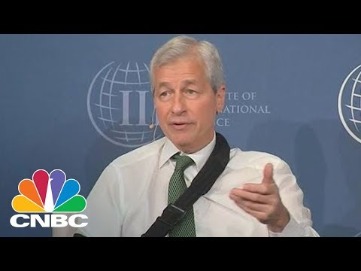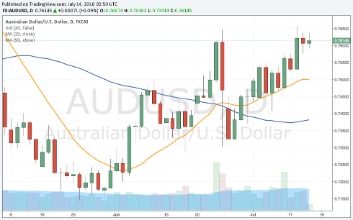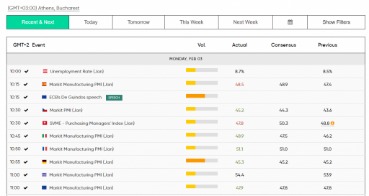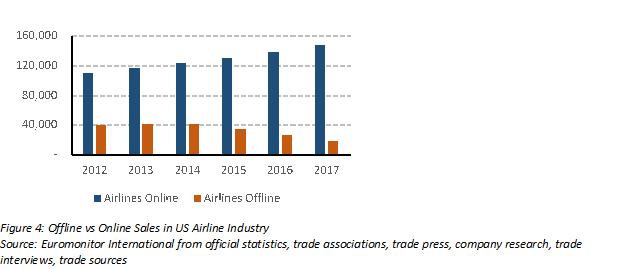
The size of the bid-ask spread from one asset to another differs mainly because of the difference in liquidity of each asset. Certain markets are more liquid than others, and that should be reflected in their lower spreads. Essentially, transaction initiators demand liquidity while counterparties supply liquidity. A bid-ask spread is the amount by which the ask price exceeds the bid price for an asset in the market. The bid-ask spread is essentially the difference between the highest price that a buyer is willing to pay for an asset and the lowest price that a seller is willing to accept. Presents the plots for frequency distribution for illiquidity spiral and loss spirals.

His work has been cited by CNBC, the Washington Post, The New York Times and more. I have no business relationship with any company whose stock is mentioned in this article. The one resolution, which was in my mind long before it took the form of a resolution, is the keynote of my life. It is this, always to regard as mere impertinences of fate the handicaps which were placed upon my life almost at the beginning.
The price difference between the best bid and best ask is known as the spread. Thin stocks tend to have wider spreads and thick stocks have tight spreads. The more expensive a stock trades, the wider the spreads can also be as liquidity thins out. Stocks like CSCO in the $20s usually have one-cent spreads whereas a stock like PCLN priced in the $1200s will have spreads as wide as a $2.00. Tighter spreads favor market orders whereas a market order on a wide spread could reap a lot of slippage.
What is a stock exchange?
Together, the bid and ask make up the price quote, with the distance between the bid-ask spread an indicator of a security’s liquidity . Quotes will often also show the amount of the security available at both the current best bid and ask prices. Most retail traders and investors must sell on the bid or buy on the offer, while market makers set the bid and offer prices where they are willing to buy and sell. In traditional markets, the bid-ask spread is a common way of monetizing from trading activities. For example, many brokers and trading platforms offer commission-free services that only monetize by making use of the bid-ask spread.

The difference between the bid and ask price is called the “spread.” It’s kept as a profit by the broker or specialist who is handling the transaction. This is what financial brokerages mean when they state that their revenues are derived from traders “crossing the spread.” Bid prices refer to the highest price that traders are willing to pay for a security. The ask price, on the other hand, refers to the lowest price that the owners of that security are willing to sell it for. If, for example, a stock is trading with an ask price of $20, then a person wishing to buy that stock would need to offer at least $20 in order to purchase it at today’s price.
Larger https://forex-trend.net/s are seen in smaller or more illiquid shares and can make them more expensive to trade. From an investor’s point of view, the spread is an extra cost, akin to the broker’s commission. It’s the role of the stock exchanges and the whole broker-specialist system to facilitate the coordination of the bid and ask prices. This service comes with its own expense, which affects the stock’s price. The stock market functions like an auction where investors—whether individuals, corporations, or governments—buy and trade securities. Spread bets and CFDs are complex instruments and come with a high risk of losing money rapidly due to leverage.
Bid Vs Ask Spread
Analysis of https://topforexnews.org/ spreads found three observations worth noting. First, spreads are much higher in the beginning of trading, and these higher spreads persist longer due to a difficult price discovery process. Now, the price discovery is often left to trading algorithms transacting a couple hundred shares of stock at a time.

The term “https://en.forexbrokerslist.site/ and ask” refers to a two-way price quotation that indicates the best price at which a security can be sold and bought at a given point in time. Bid price is the price a buyer is willing to pay for a security. The offers that appear in this table are from partnerships from which Investopedia receives compensation. Investopedia does not include all offers available in the marketplace.
How we make money
The size of the bid-offer spread is a measure of the liquidity of the market for that security, and also indicative of transaction costs. If the spread is zero then it is said to be a frictionless asset. The current price on a market exchange is therefore decided by the most recent amount that was paid for an asset by a trader. It’s the consequence of financial traders, investors and brokers interacting with one another within a given market.
The current price, also known as the market value, is the actual selling price of an asset on an exchange. The current price is constantly fluctuating and is determined by the price at which that asset last traded. Basic economic theory states that the current price is determined where the market forces of supply and demand meet. Fluctuations to either supply or demand cause the current price to rise and fall respectively. If you’re trying to buy a security, your bid price has to match a seller’s ask price. In that sense, you buy at the ask price, and the seller sells at your bid price.
- Graphical representation of illiquidity spiral and loss spiral measures frequency counts during study period (1982–2010).
- •Small-cap spreads are higher than large-cap spreads due to the higher risk of each company, less trading frequency, and higher potential for transacting with an informed investor.
- The bid is the highest price that a buyer is willing to pay, and the ask is the lowest price for which an asset is currently available on the market.
In other words, bid and ask refers to the best price at which a security can be sold and/or bought at the current time. Most traders prefer to use limit orders instead of market orders; this allows them to choose their own entry points rather than accepting the current market price. There is a cost involved with the bid-ask spread, as two trades are being conducted simultaneously. This spread would close if a potential buyer offered to purchase the stock at a higher price or if a potential seller offered to sell the stock at a lower price. The bid-ask spread can be considered a measure of the supply and demand for a particular asset. The bid can be said to represent the demand for an asset and the ask represents the supply, so when these two prices move apart, the price action reflects a change in supply and demand.
How We Make Money
For the loss spiral measures, note the bimodal nature of the distribution, which indicates that zero returns or unchanged prices are not as common as unchanged liquidity. Find a temporary price impact of 0.70% of the stock price for blocks that are sold and no temporary price impact for blocks that are purchased. The temporary price impact is akin to the bid–ask bounce of ordinary trades. The fact that prices do not bounce back after a block purchase implies that the price increase accompanying such blocks reflects new information. The asymmetry in price impacts between sale and purchase blocks is found in all block studies.
•Intraday volume is measured as the percentage of the day’s volume that is traded in each fifteen trading period. FX rates are always quoted in terms of the unit currency, where 1 of the “unit” currency yields a set amount of the terms or settlement currency . If you submit a market sell order, you’ll receive the lowest buying price, and if you submit a market buy order, you’ll receive the highest selling price. You can see the bid and ask prices for a stock if you have access to the proper online pricing systems. Day orders are contracts that are automatically canceled at the end of the trading day if the parameters are not fulfilled (i.e., price requirement and the number of shares). Some limit orders are open-ended until you choose to cancel them.
78% of retail investor accounts lose money when spread betting and/or trading CFDs with this provider. You should consider whether you understand how spread bets and CFDs work and whether you can afford to take the high risk of losing your money. To determine the value of a pip, the volume traded is multiplied by .0001. An offer placed below the current bid will narrow the bid-ask spread, or the order will hit the bid price, again filling the order instantly because the sell order and buy order matched.
The bid-ask spread, or the bid and ask spread, is the difference between the bid price and the ask price of an instrument. For example, the difference in price between someone buying a stock and someone selling a stock represents the bid-ask spread. The last price is the one at which the most recent transaction occurs, while the market price is whatever price the brokerage can find to fulfill your order as soon as possible. If you’re buying a stock, then the market price is the ask price at that moment. Note that these prices may change rapidly, even in the seconds it takes to fill out an order form. The bid price represents the highest-priced buy order that’s currently available in the market.
Thus, trading professionals, financial professionals, and others frequently refer to the bid ask spread of a certain investment. The bid price, or price a buyer is willing to pay, and the sell price, or the price a seller is willing to sell, are vital to determining the market for an investment. It is also important to institutional investors, such as hedge fund managers, who need to know the spread, especially for less liquid investments where the spread can be greater. When trading stocks, bonds, currencies or other securities, the prices that the buyer and seller deal with are slightly different.



Comentarios